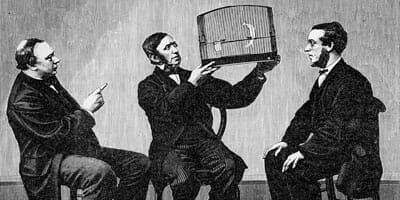While the responsible investment field has come a long way, the majority of investors are still treating it as an overlay, rather than truly integrating it into investment decision-making.
This is not an ideal situation for the investment industry, not to mention society at large, but it presents an opportunity for those that do integrate enviroment, social and governance (ESG) issues with investments, and do it well.
For the past three years the giant Dutch pension manager, PGGM, has had a specific portfolio, the The essence of the portfolio is a long-term investment horizon that integrates financial and ESG factors with active ownership. The Responsible Equity Portfolio is worth about 3 per cent of the overall assets of €125 billion ($167 billion).
Responsible investment 2.0
Now the head of that strategy, Alex van der Velden, and a number of the team have started a new independent firm that offers strategies managed in the same vein.
It’s the “next generation” of responsible investment evolution.
“From an investment perspective you do ESG analysis to prevent the problems. When we showed up to invest, conditional on improvement of the issues, it was win/win. The effect is greater the larger the bag of money you can put on the table,” van der Velden, who is chief investment officer of the new venture, says.
He says in the past few years there have been perceived positive moves in the market regarding ESG awareness, but in reality little uptake.
“People accept principles of responsible investment and there is more open-mindedness to the concept. But it is also a façade that people can hide behind and do nothing. Most funds managers are hardly doing anything. If you ask at the portfolio-manager level, it is not happening at that level,” he told top1000funds.com in July last year.
It is a challenge that most investment processes don’t deal with qualitative processes like ESG or are involved in investee companies.
This next generation of responsible investing that van der Velden and his team are adopting at Ownership Capital integrates ESG considerations as part of the fundamental investment framework.
As at PGGM, the strategic objectives of the portfolio are ESG integration and active ownership, with the point of integration to see how ESG could add value to – or detract value from – a company. This is implemented through better stock selection of sustainability leaders and through better management of ESG risk by catalysing ESG improvements at laggards through active ownership.
There is a three-pronged analytical approach involving fundamental financial analysis, ESG integration and active ownership. There is also recognition that ESG analysis takes a substantial amount of time, not just to understand the specific facts but, more importantly, to understand their financial relevance, and the approach is active and concentrated.
Canary in the coalmine
Van der Velden says that many funds have adopted engagement with companies but that strategy falls short in fulfilling the original ambition.
“The investment decision has already been made,” he says. “It’s reactive engagement on policy issues not doing research and engagement before the investment. PGGM realised that to generate investment value from ESG, analysis need to be part of the investment process. The philosophy worked well: when we added ESG analysis or engaged with a company, we made better decisions.”
The process also revealed further problems within the company.
“A measure of success is returns but also the investment decisions you didn’t make, we noticed ESG problems were a canary in the coalmine for deeper issues the companies had.”
Van der Velden believes this process is not more pervasive in the investment industry for a number of reasons. “There is a cultural aversion to considering qualitative factors – the investment industry is quant-based and incentive structures are short term in nature,” he says. “Also, ESG is not a short-term value driver: if you only have a 12-month horizon, you won’t do ESG analysis.”
One unified strategy
The new firm has an eight-man investment team headed by Sir George Buckley, the former chief executive officer of 3M, the US manufacturing and innovation company, and van der Velden. They met when van der Velden’s team were engaged investors in 3M.
The long-time horizon fund will invest in a concentrated portfolio of North American and European equities for international institutional investors, with a target fund size of $2.67 billon. The portfolio combines fundamental financial analysis, ESG analysis and active ownership into one unified strategy with the overarching aim of identifying companies that are financially attractive, responsible and open to engagement.
In practice this means the investment process involves financial analysis and modelling, ESG analysis and measurement, in an active dialogue with investee companies from the start.
He says in many investment organisations ESG continues to be dismissed as financially irrelevant, but he believes a culture of open-mindedness must be nurtured in which both ESG and financial factors can be seen as critical and as correlated over the longer term.
Buckley, who is chairman of Ownership Capital, says the turbulent economc environment calls for shareholder engagement and a sustainable approach to business.
“The chance to chase a quick dollar (and the fear of not doing so) has distracted investors in the past, often to the detriment of long-term growth and good returns, and this simply has to change if we’re to get the economy back on track. It’s not about the next quarter or even the next year – it’s about the next decade,” he says.
“A narrow focus on buying and selling has made owning with skill something of a forgotten art,” said van der Velden says. “Our experience has shown that ‘ownership investing’ not only contributes to better corporate governance and sustainability, it ultimately generates higher investment returns.”
For a profile of PGGM’s approach, click here.



